SCIM Integration: Okta and DataHub
Overview
This document covers the steps required to enable SCIM provisioning from Okta to DataHub.
This document assumes you are using OIDC for SSO with DataHub. Since Okta doesn't currently support SCIM with OIDC, you would need to create an additional SWA-app-integration to enable SCIM provisioning.
After completing this guide, Okta will automatically sync user and group changes from your SWA app integration to DataHub. This streamlines user and group provisioning in DataHub.
Important notes about roles and permissions:
- User and group roles from Okta are not transferred to DataHub
- When a group is first synced to DataHub, you can assign roles to that group directly in DataHub
- All users in the group will inherit the group's assigned roles
- You can also apply DataHub policies to groups, which will affect users based on their group membership
Why SCIM provisioning?
Let us look at an example of the flows enabled through SCIM provisioning.
Consider the following configuration in Okta
- A group
governance-team - And it has two members
johnandsid
Through SCIM provisioning, the following are enabled:
- Okta can create a group
governance-teamin DataHub when you "Push Groups" in Okta. - If the
governance-teamgroup is assigned to the DataHub app in Okta, Okta will create the usersjohnandsidin DataHub. - If you remove
johnfrom groupgovernance-teamthenjohnwould automatically get deactivated in DataHub. - If you remove
sidfrom the DataHub app in Okta, thensidwould automatically get deactivated in DataHub.
By default, groups and users synced from Okta to DataHub through this integration have no roles assigned. You can assign roles to these groups directly within DataHub.
Generally, any user assignment/unassignment to the app in Okta - directly or through groups - are automatically reflected in the DataHub application.
Configuring SCIM provisioning
1. Create an SWA app integration
a). Create a new SWA app integration, called say, DataHub-SCIM-SWA.
Note: this app-integration will only be used for SCIM provisioning. You would continue to use the existing OIDC-app-integration for SSO.
b). In the General tab of the DataHub-SCIM-SWA application, check the Enable SCIM provisioning option
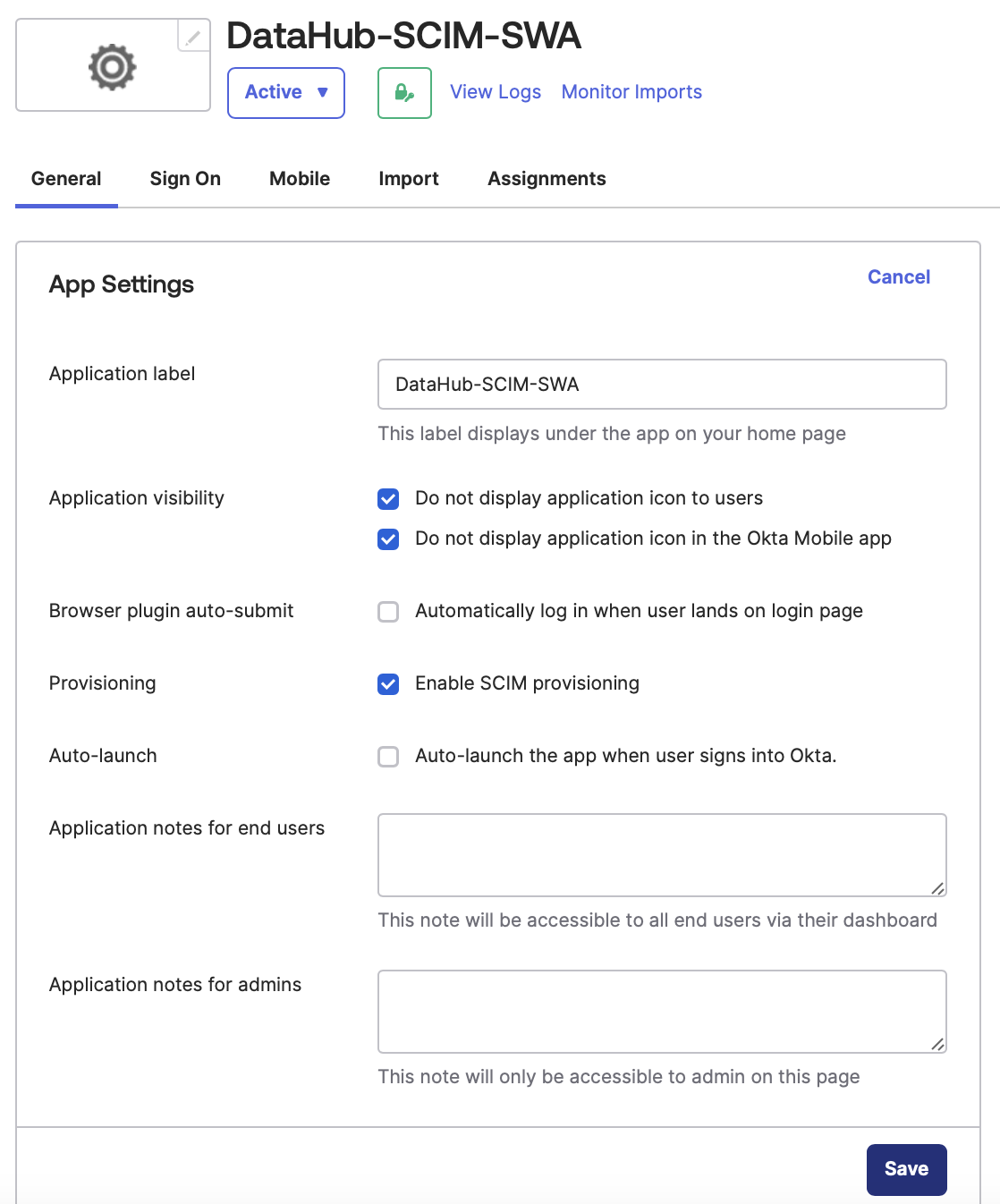
You may also want to configure the other selections as shown in the above image, so that this application isn't visible to your users.
2. Configure SCIM
a). Generate a personal access token from DataHub.
b). In the Provisioning tab, configure the DataHub-SCIM endpoint as shown in the below image:
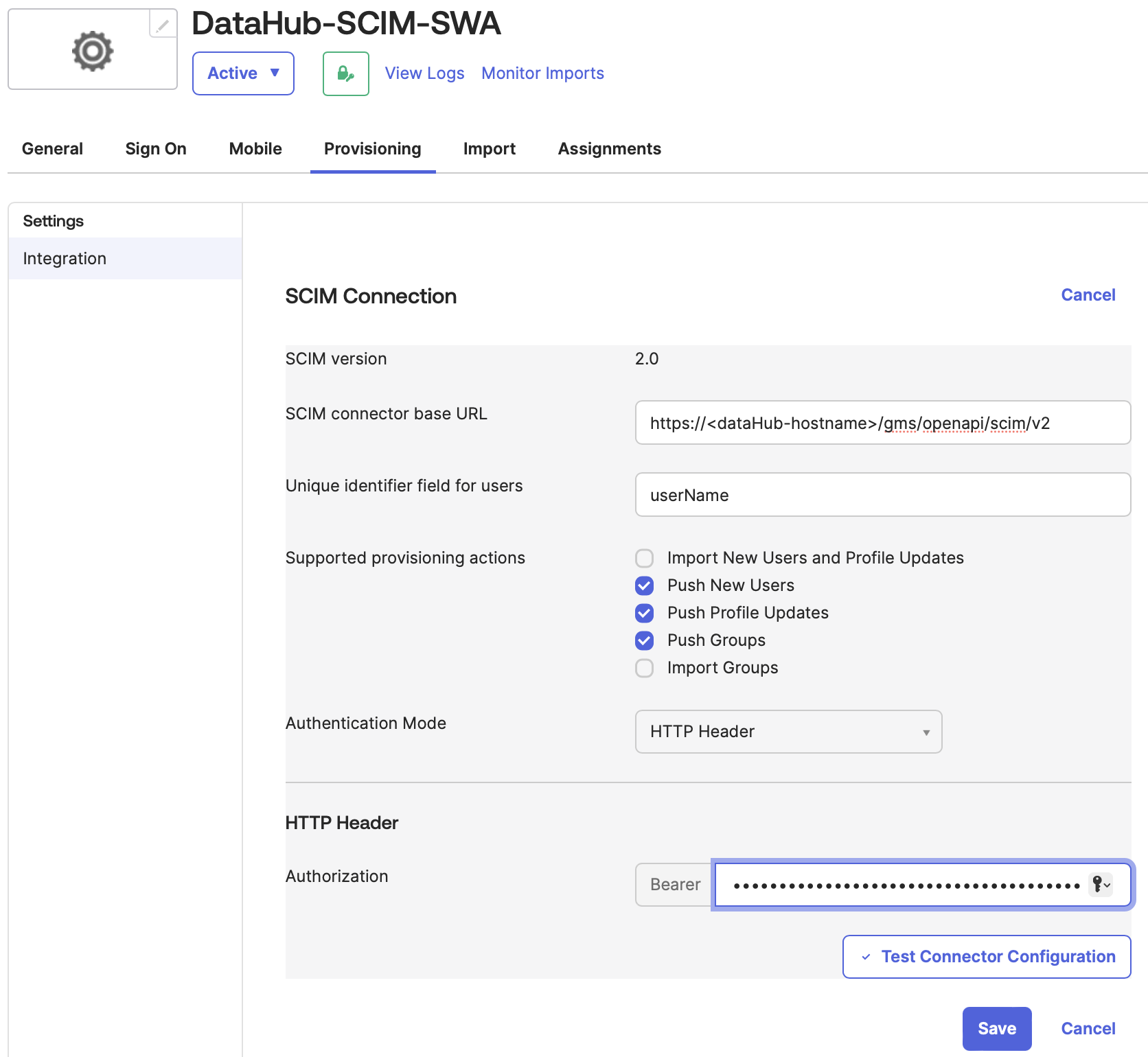
Note: Set the value of the Bearer field to the personal access token obtained in step (a) above.
c). Configure the To App section as shown below:
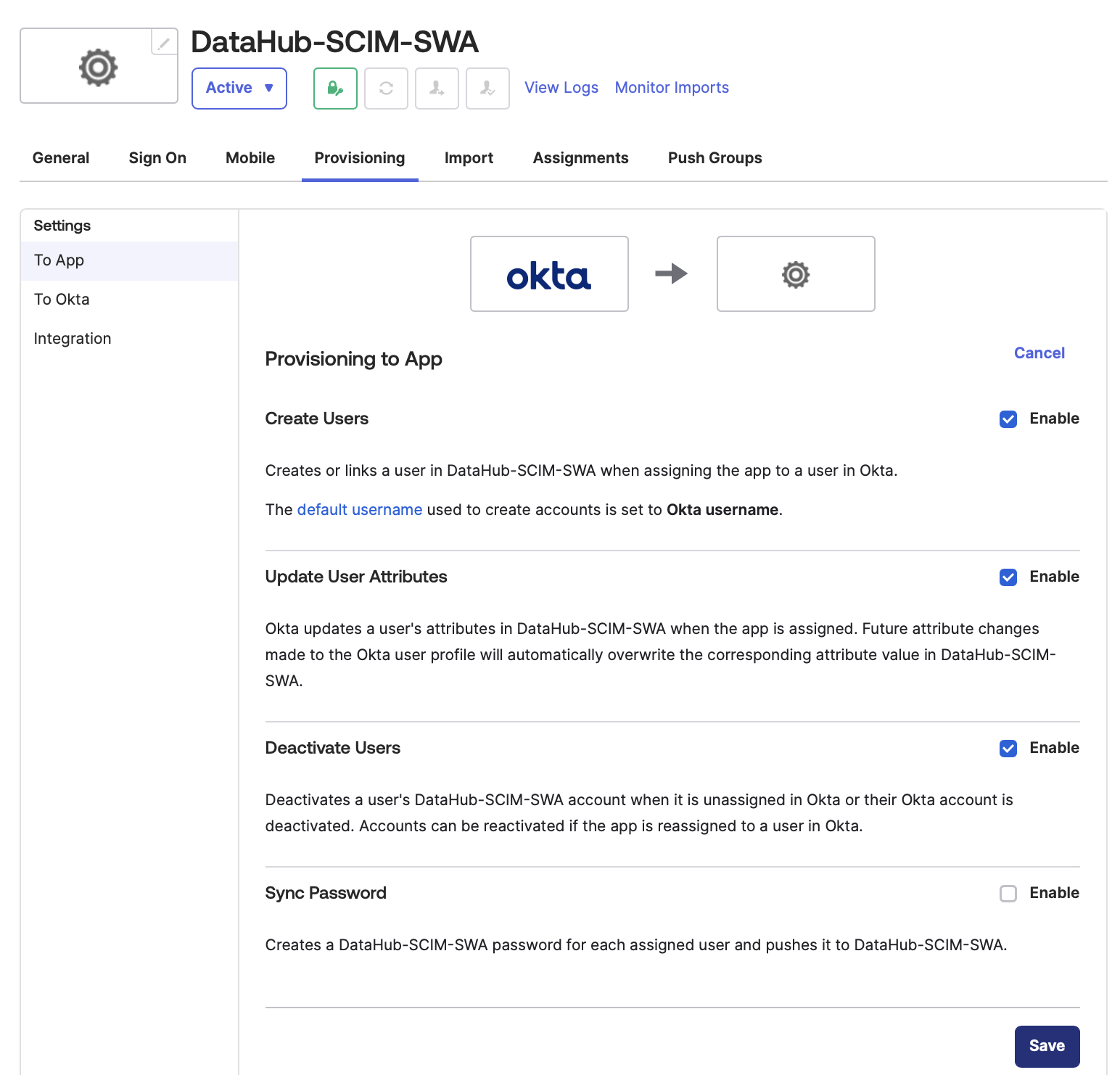
Note: We are not pushing passwords to DataHub over SCIM, since we are assuming SSO with OIDC as mentioned earlier.
3. Assign users & groups to the app
Assign users and groups to the app from the Assignments tab:
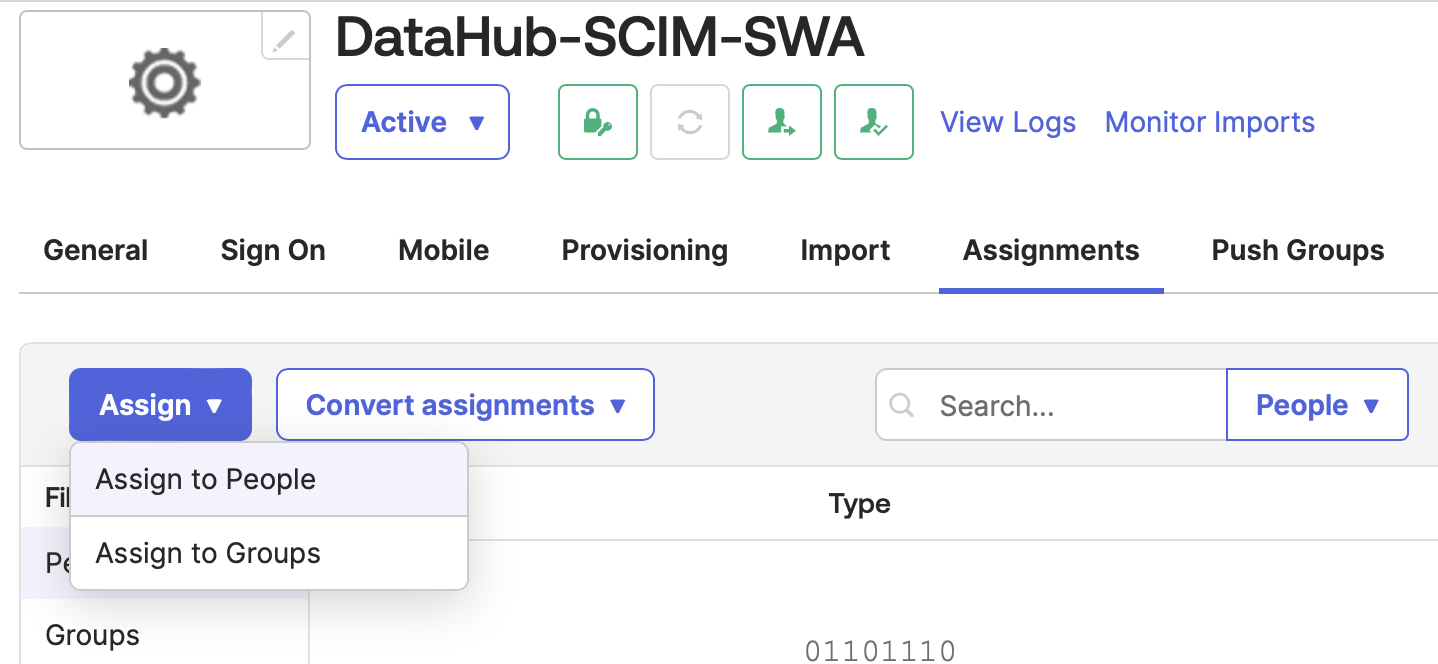
The provisioning setup is now complete
Once the above steps are completed, user assignments/unassignments to the DataHub-SCIM-SWA app in Okta will get reflected in DataHub automatically.
A note on user deletion
Note that when users are unassigned or deactivated in Okta, the corresponding users in DataHub are also deactivated (marked "suspended"). But when a user is deleted in Okta, the corresponding user in DataHub does not get deleted. Refer the Okta documentation on Delete (Deprovision) for more details.
5. (Recommended): Configure push groups
When groups are assigned to the app, Okta pushes the group-members as users to DataHub, but the group itself isn't pushed.
To push group information to DataHub, configure the Push Groups tab accordingly as shown below:
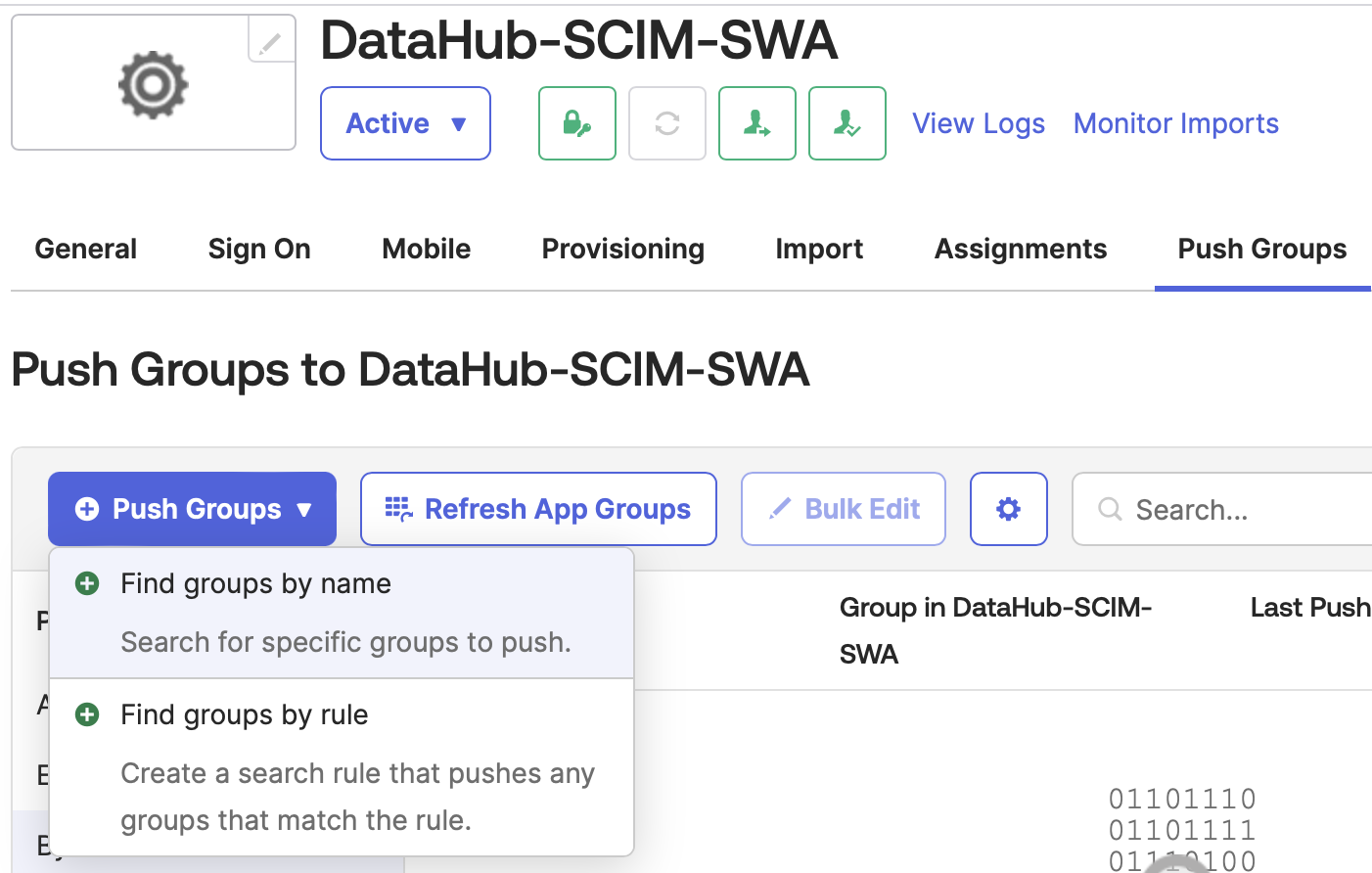
When you assign roles or policies to groups in DataHub, all users in those groups automatically inherit the same roles or policies Refer to the Okta Group Push documentation for more details.